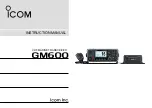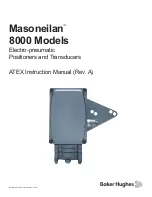
Virtex-5 RocketIO GTP Transceiver User Guide
239
UG196 (v1.3) May 25, 2007
BGA Package
R
The results using these equations are not sensitive to rise time variation and are valid for
simulated TDR measurements provided that the leading and trailing transmission lines
are very close to 50
Ω
. However, for actual measurements, accuracy is very dependent on
Z
0
.
BGA Package
The transceiver signal paths within the BGA package are optimized using a 3D full-wave
solver. Package traces are designed to be 50
Ω
high-speed transmission lines, while solder
ball and bump regions are tuned to 50
Ω
.
Flip-chip package transitions are effectively invisible to 10 Gb/s signals. The longest
package paths have some insertion loss, less than 1 dB worst-case. To allow full simulation
of package effects, the Xilinx Signal Integrity Simulation kit provides extracted
S-parameter models of the package.
SMT Pads
For applications that require AC coupling between transmitter and receiver, SMT pads are
introduced in the channel to allow coupling capacitors to be mounted. Standard SMT pads
have excess capacitance due to plate capacitance to a nearby reference plane. In the
following example, a 5 mil trace with a Z
0
of 50
Ω
transitions to an 0402 SMT pad that is
28 mils wide, all over 3 mils of FR4.
Using a 2D field solver on these dimensions yields a Z
0
of 50
Ω
for the 5 mil trace. The Z
0
for
the 0402 pad is 16
Ω
because the pad has too much capacitance and too little inductance,
resulting in an impedance of less than 50
Ω
. Performance of this transition can be
optimized in one of two ways.
The first method makes the trace the same width as the pad and moves the ground plane
deeper into the stackup to maintain the Z
0
of the transition at 50
Ω.
This method does not
require any special analysis, but there might be some error due to the fringing capacitance
of the SMT capacitor body. Trace density is limited because traces are now 28 mils wide.
The second method clears the ground plane underneath the pad, which removes much of
the excess capacitance caused by the plate capacitance between the pad and the ground
plane. This technique allows for greater trace density than the first method, but requires
Figure 13-4:
2D Field Solver Analysis of 5 Mil Trace and 28 Mil Pad
Line
- 5.2 mils wide over 3 mil FR4 Dielectric
- L = 288 nH/m
- C = 116 pF/m
- Zo
=
50
Ω
5 Mil Trace
Pad
- 28 mils wide over 3 mil FR4
- L = 98 nH/m
- C = 404 pF/m
- Zo
=
16
Ω
28 Mil Pad
UG196_c13_04_051406
















































